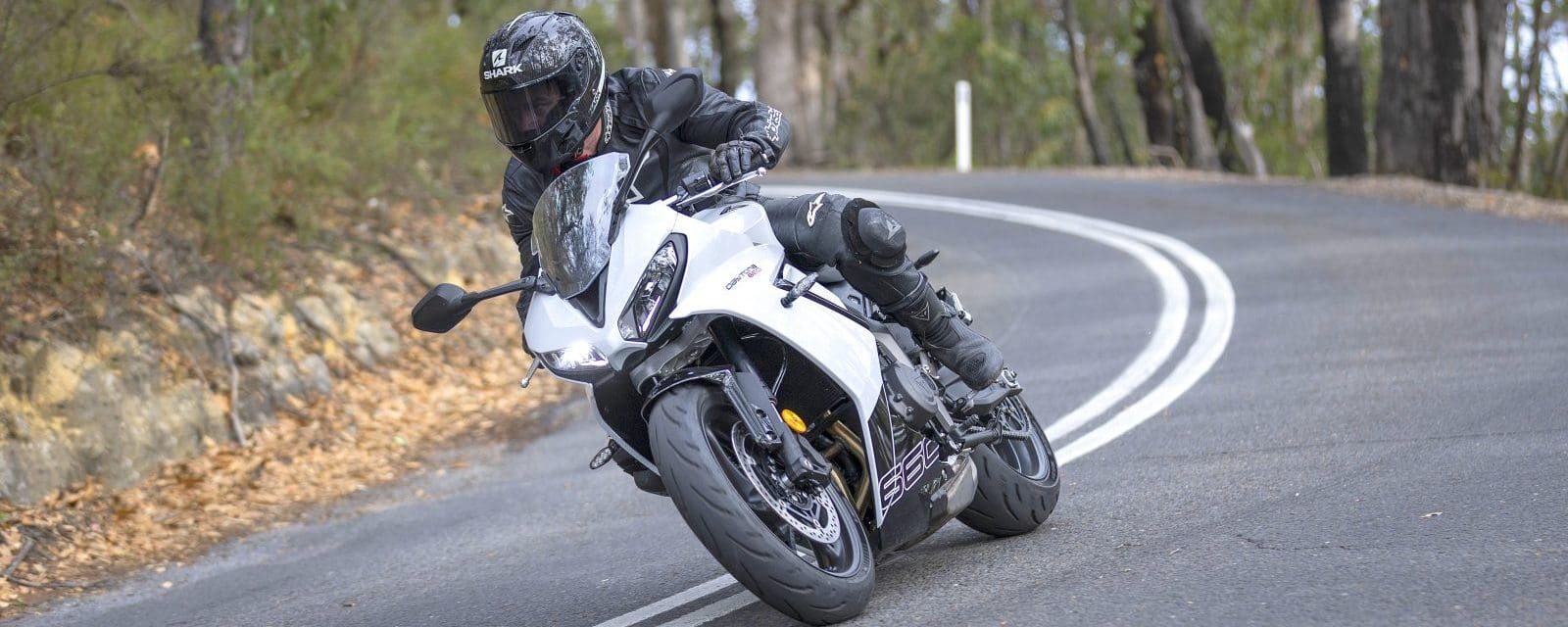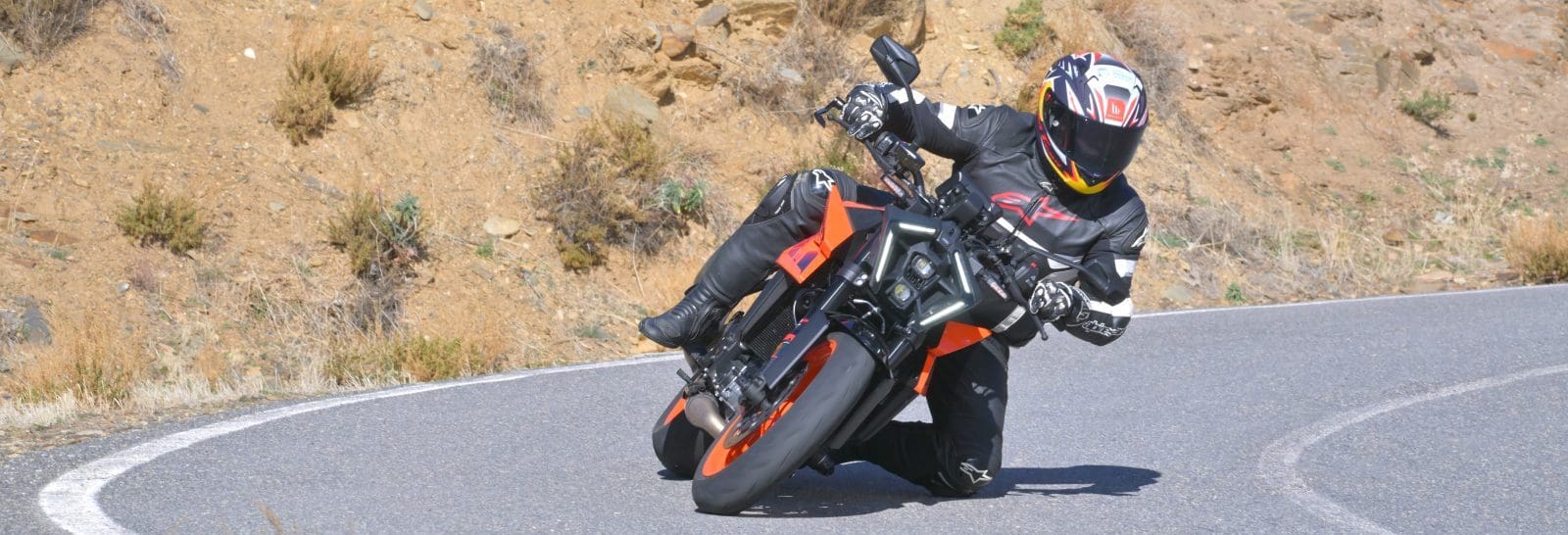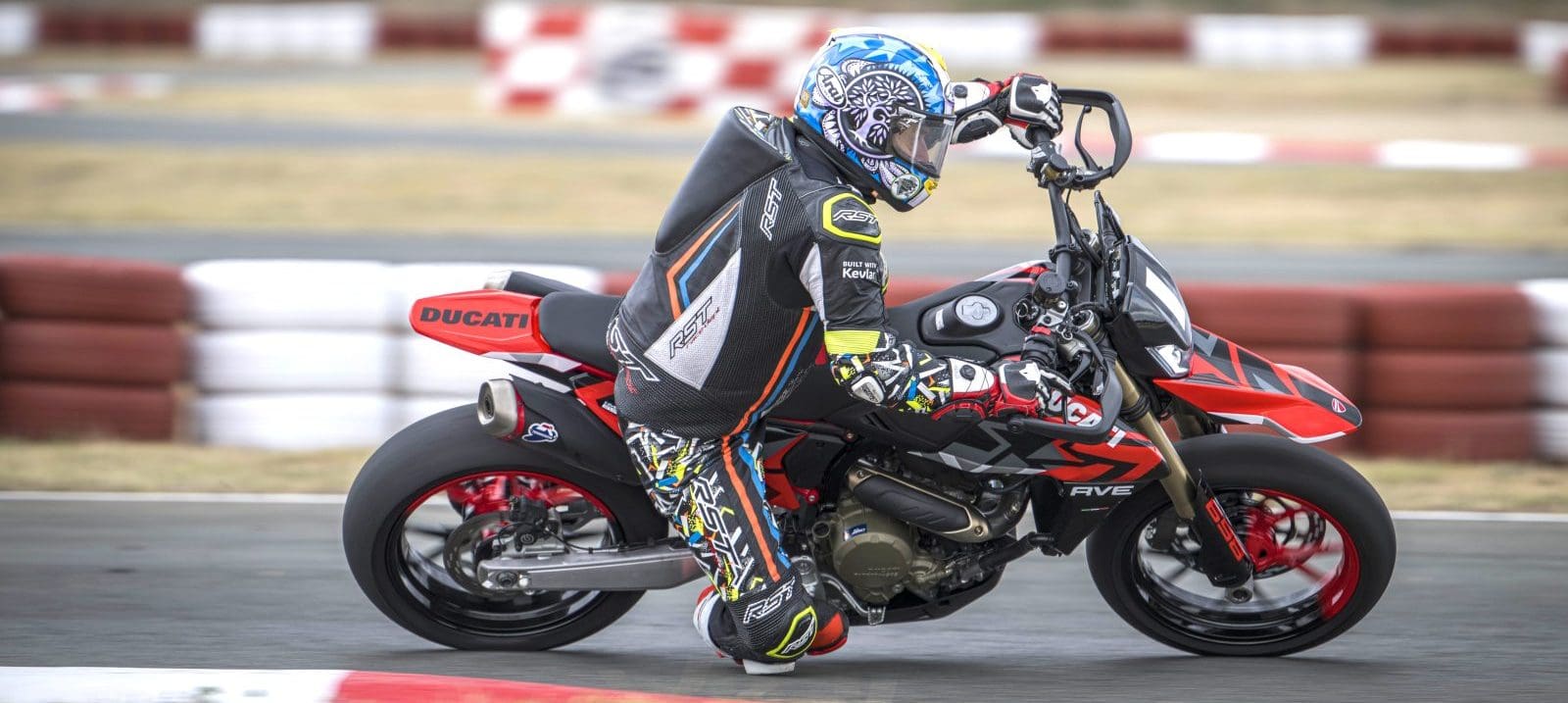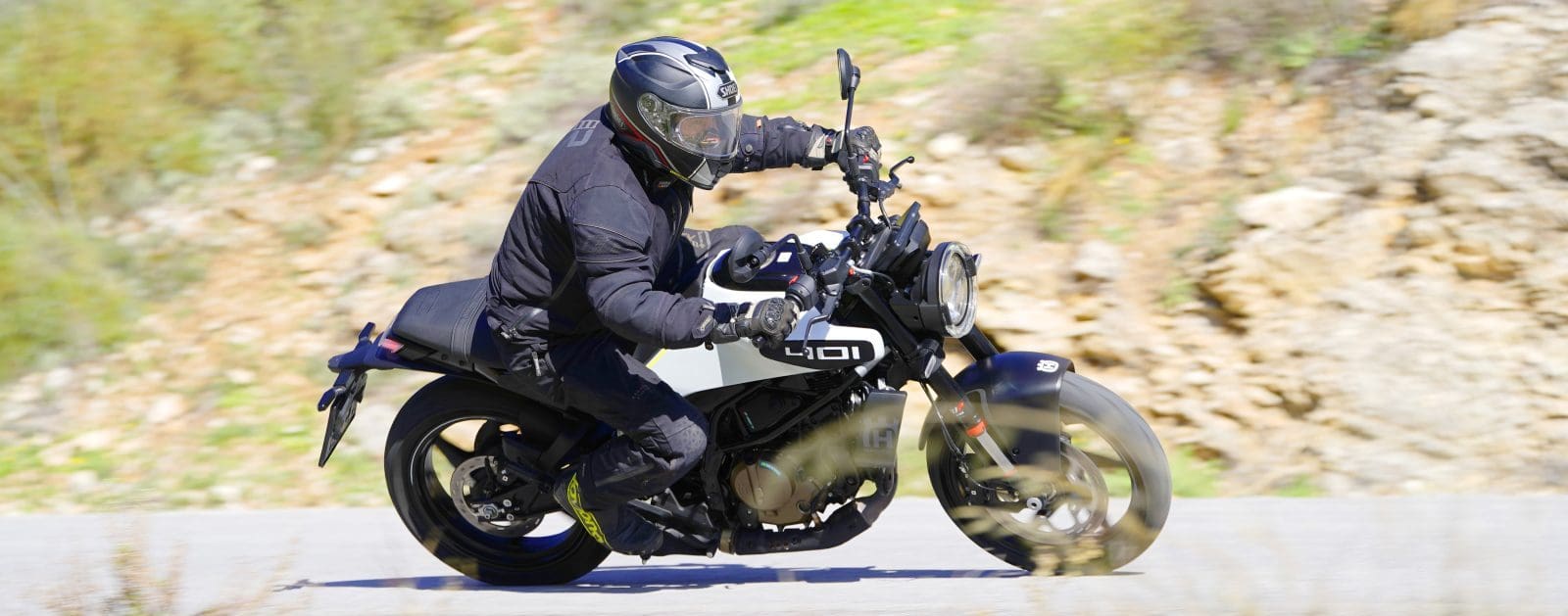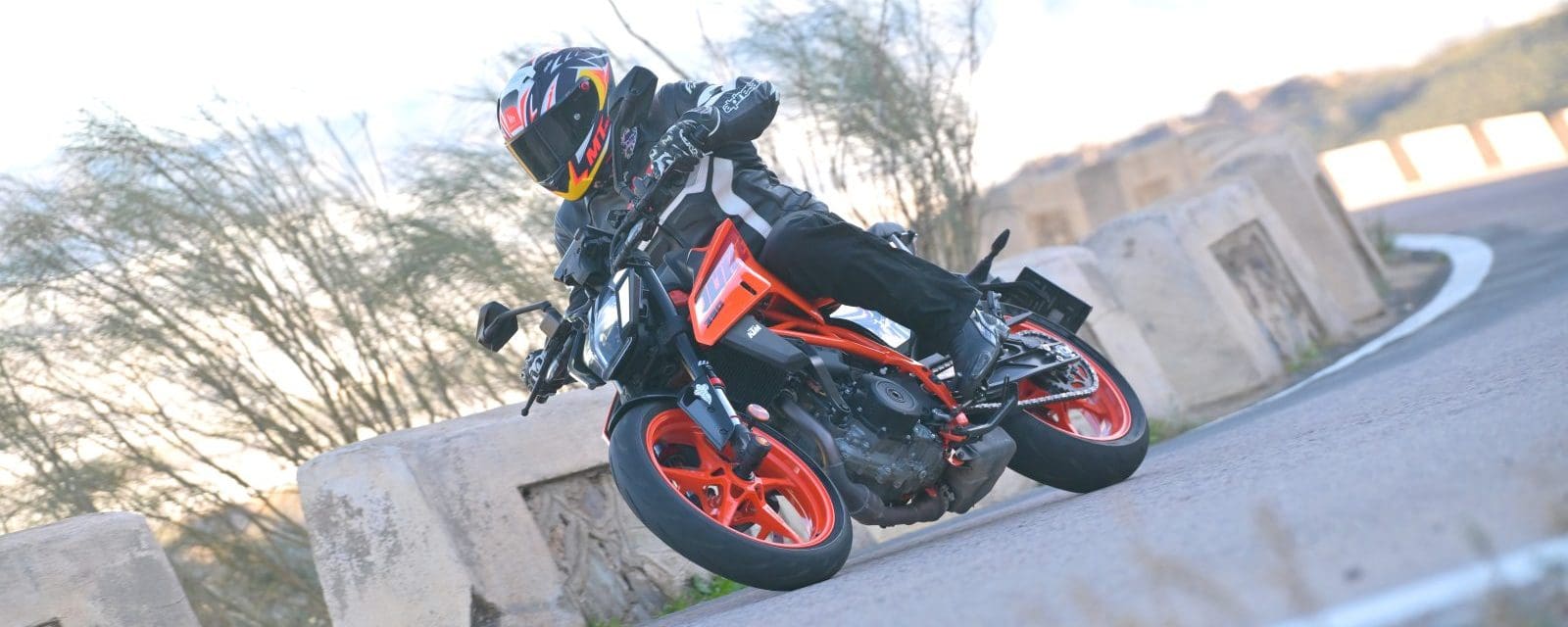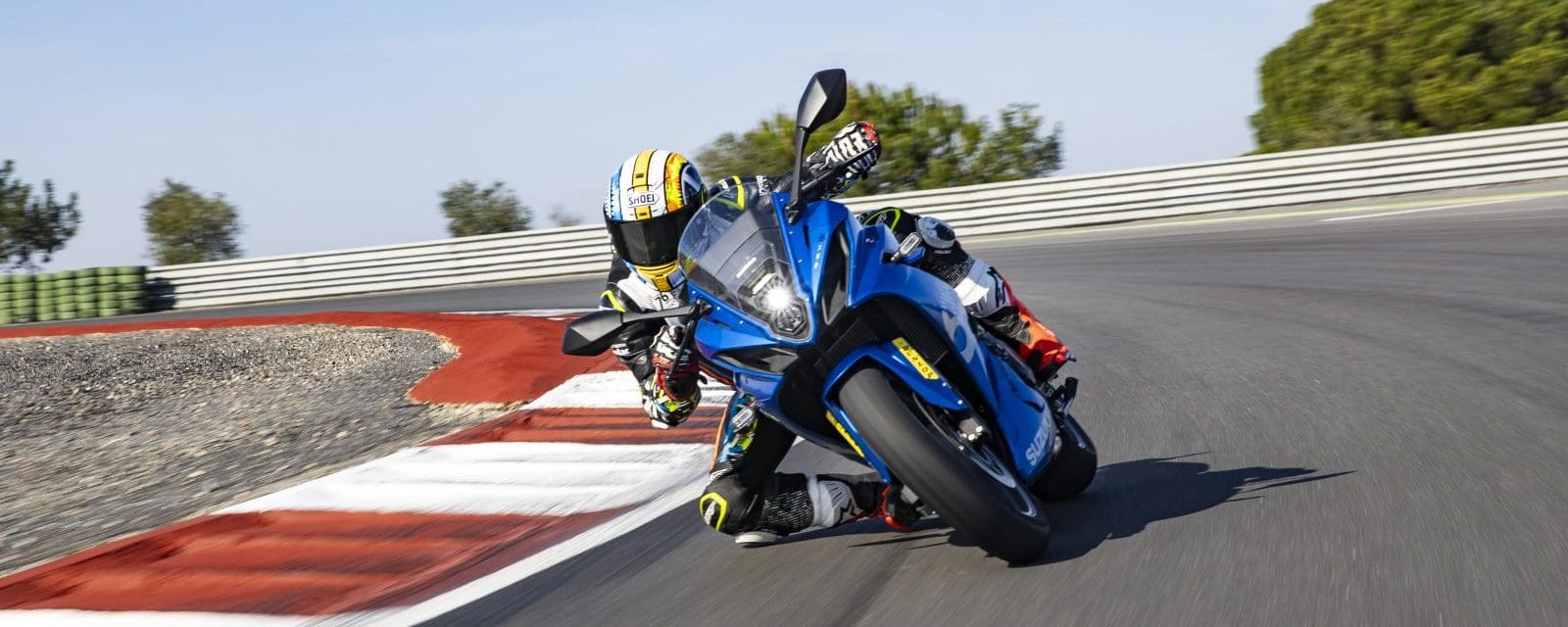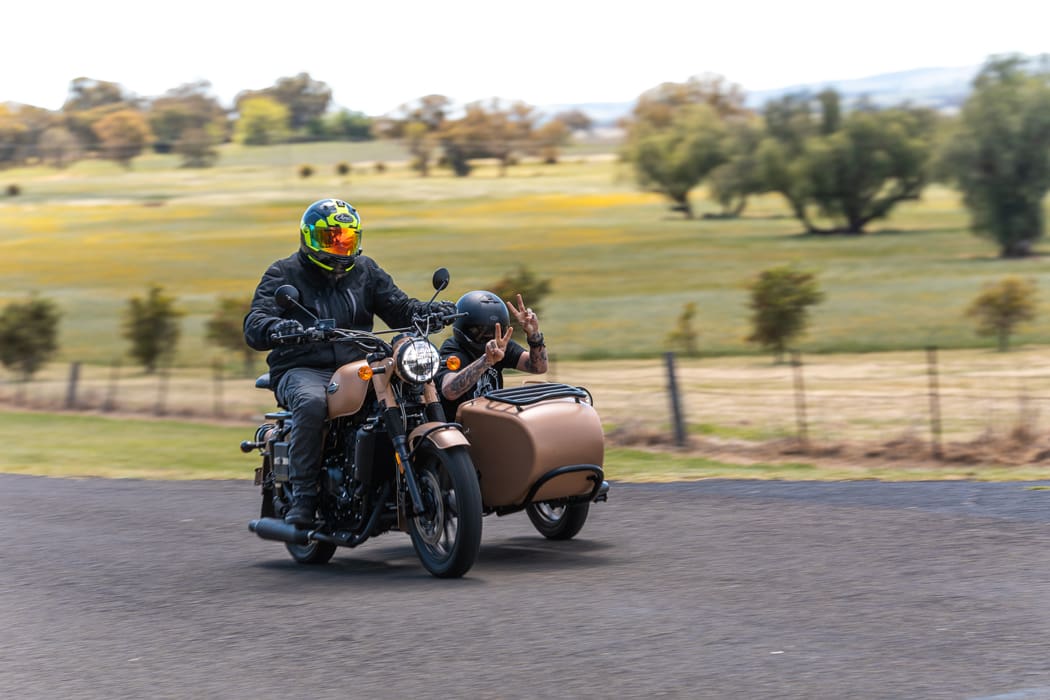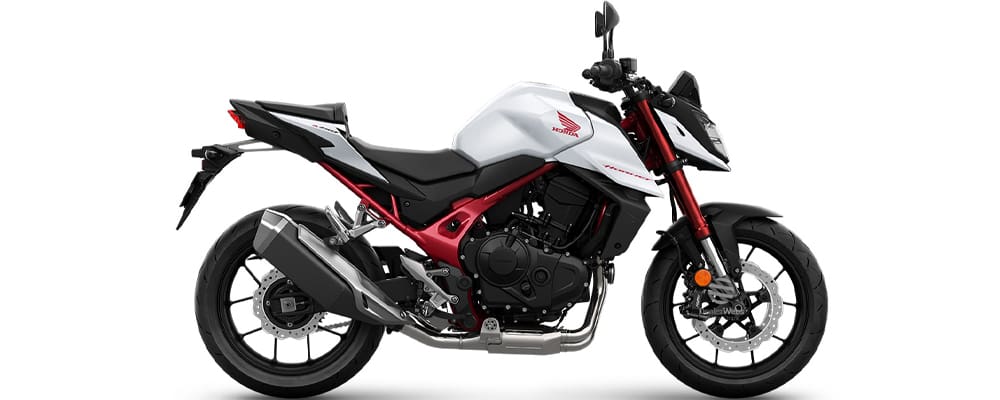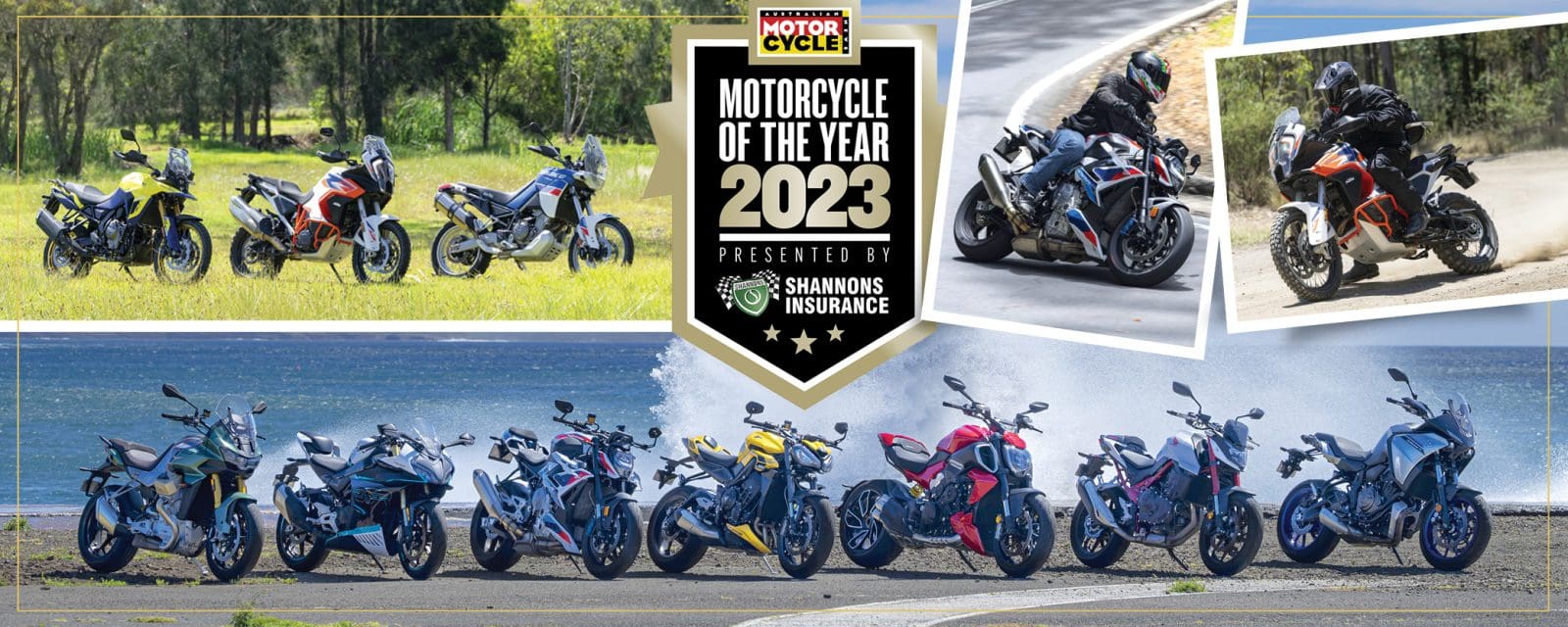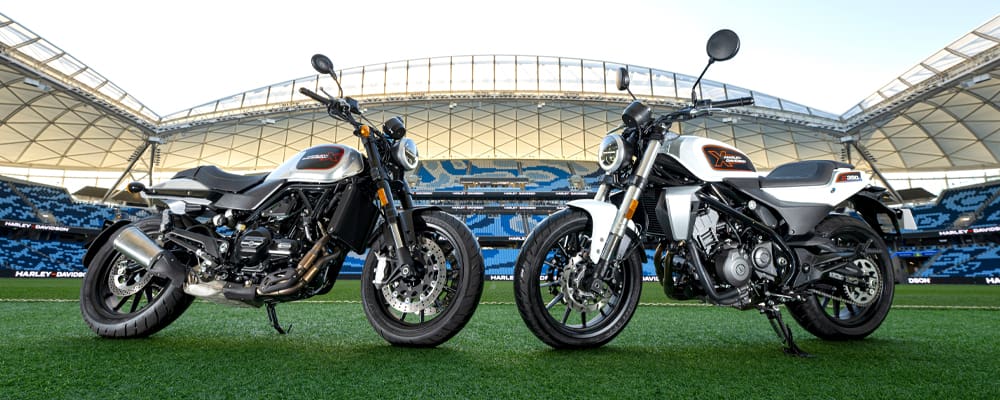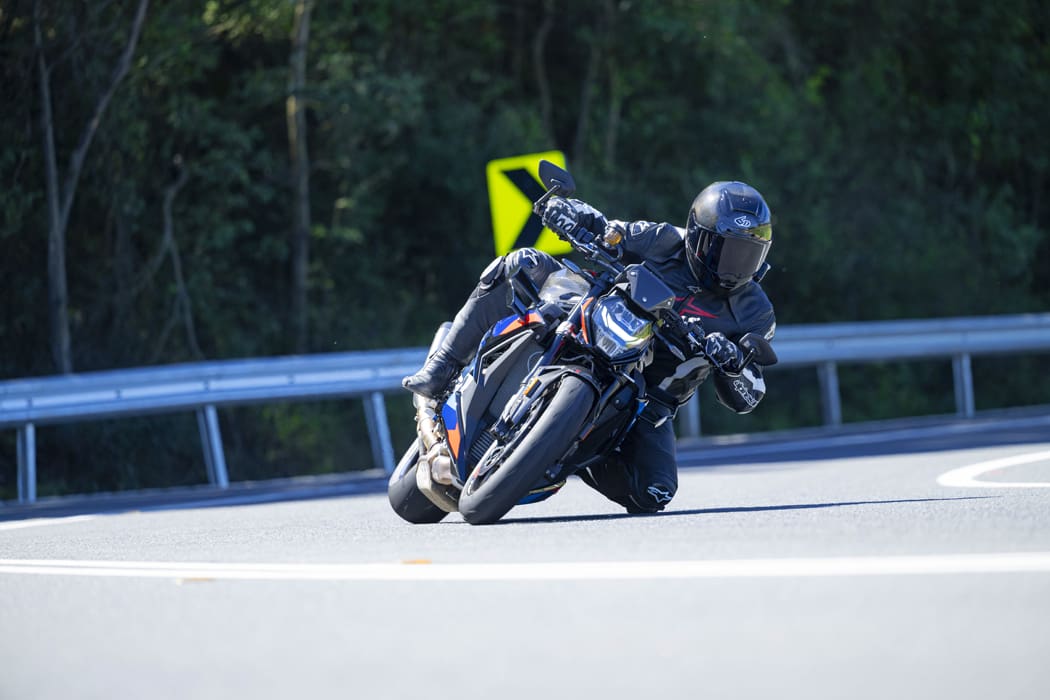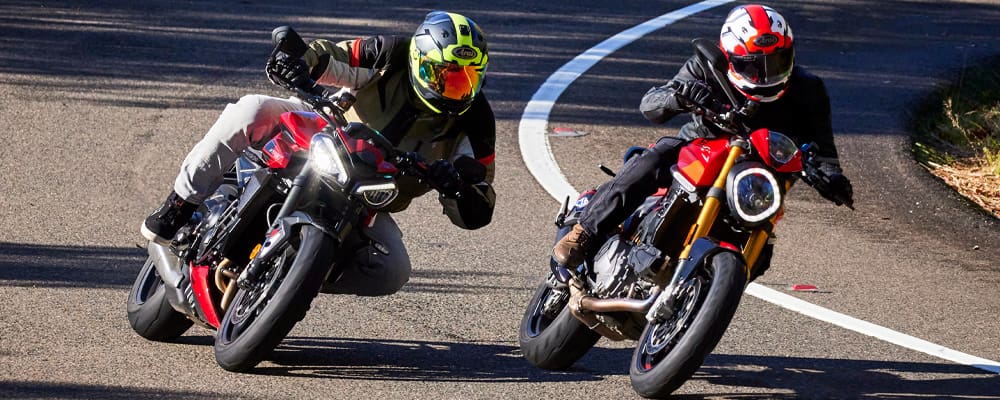We sent Youngy to Spain to sample the new Husqvarna Svartpilen and Vitpilen 401 models. Here is his take:
Divide opinion, then multiply it by the power of how ever many motorcycle brands you currently own. It’s a strategic equation which Pierer Mobility Group has used often to great effect. But different is only good, commercially, when you can hypnotise the head-strong, coaxing them onboard the renegade train in substantial numbers. For my cynical Swiss-army style sensibilities, Husqvarna’s street range has always sailed a bit too close to being styling for vanity’s sake.
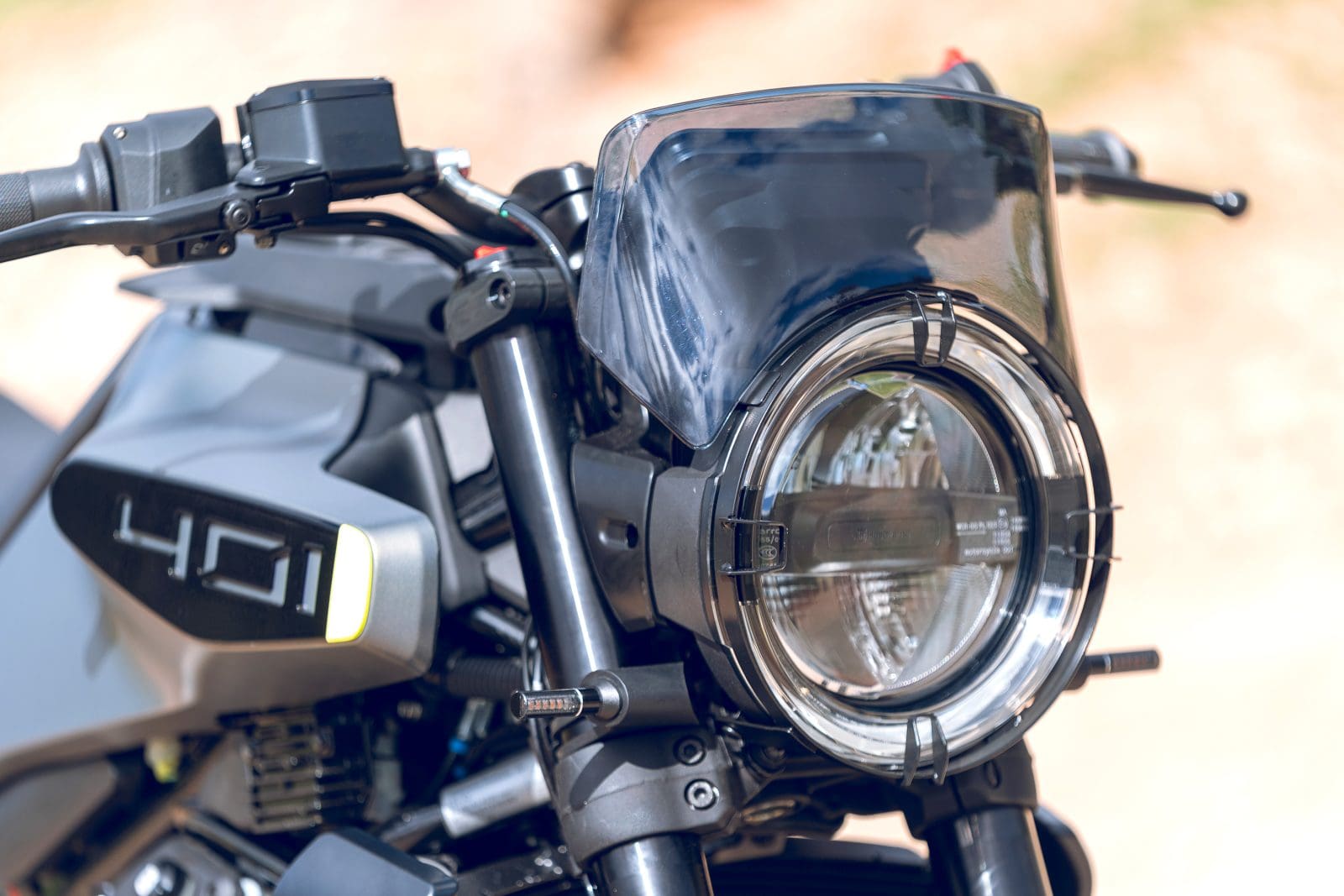
It’s been a slow burn, but finally I’m willing and able to appreciate the ’pilens, both Svart and Vit. Why? Because this first big model update makes the pseudo-Swedes a lot easier to swallow. These are fine motorcycles first and an artist’s indulgence second, not the other way around.
In the last issue (AMCN Vol 07 No 18), Wattie got the holeshot on me with a spin on KTM’s 2024 390 Duke, with which the Husky 401s are very closely related. So, rather than going over ground already scorched in Wattie’s Duke launch review, let’s focus on the Husqvarnability of the new PMG platform.
The frame is all-new and tubular steel from top to tail, as opposed to the Kato, which gets a die-cast aluminium subframe. Taking up the rear is a familiarly chunky exoskeletal cast-aluminium swingarm, but for 2024 it’s an oh-so-racy gull-arm design on the right. The bird’s elbow is the push point for a single, offset and direct-acting WP Apex shock. As well as the spring and damping settings, the shock’s installation angle and effective ratio are all revised for 2024. All play a part in delivering an impressive ride quality.
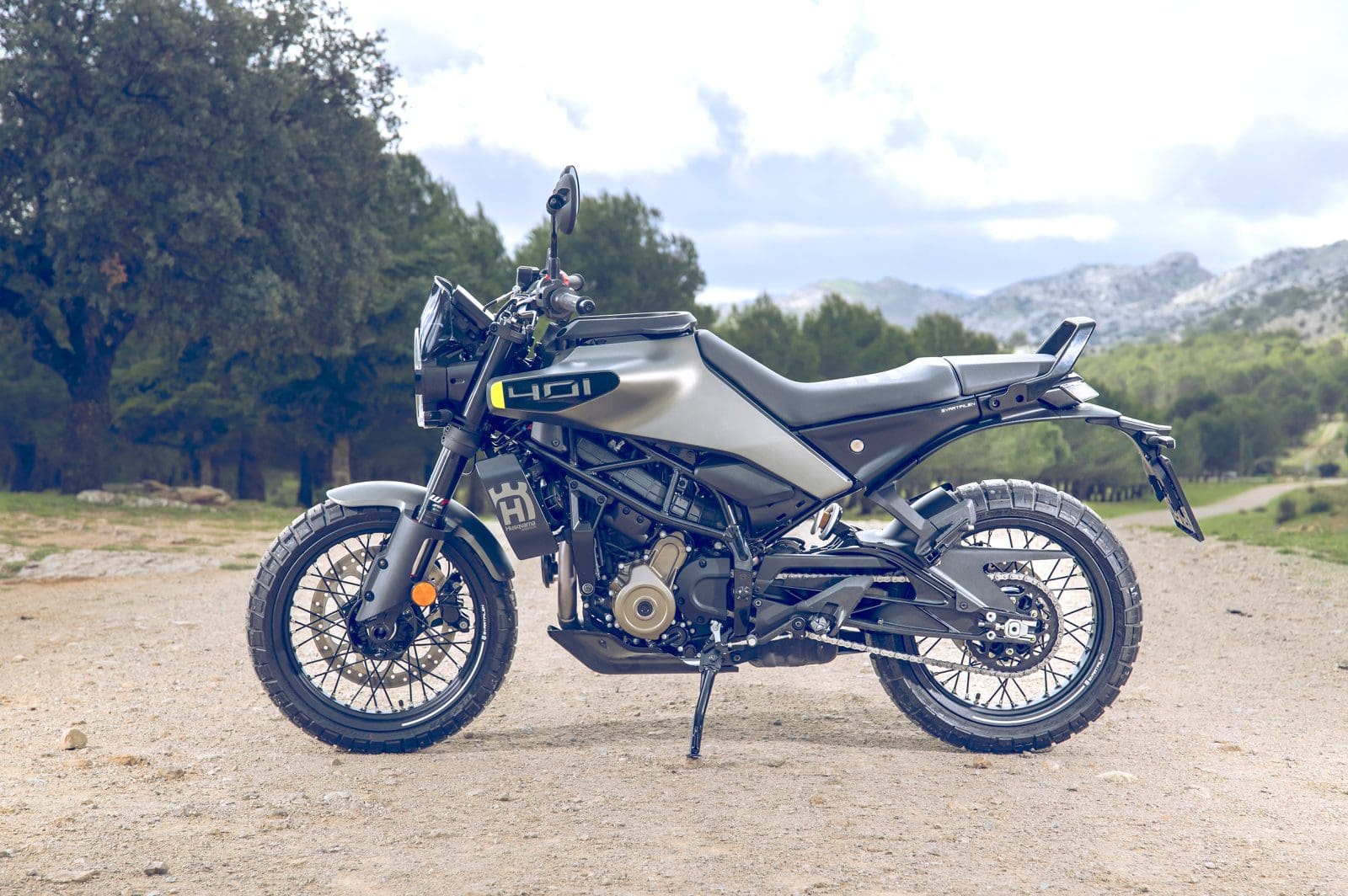
Out front is a 43mm WP Apex USD fork, which is set up to match the rear’s plush road compliance. Plushness is not necessarily what you want when the pace hots up, and it did, but the Husky finds a nice balance between control and comfort for real-world riding.
This fantastic ability to float over ragged roads is further enhanced by new seats. Although a bench design on the Vitpilen and two-piece on the Svartpilen, the riders’ area is very similar in shape. Unlike the outgoing 401 models, these seats have undoubtably been designed for sitting on, not just ogling at with an influencer’s rump hovering above suggestively. The foam depth and density, the texture and tractability of the cover, the full and supportive profile, it’s all been tuned tushtastically. And after 190 kays of deliciously tarred Andalusian mountain spaghetti, both rough and smooth, not even a murmur of discomfort. Although the cover material is so thin and pliable that it did pucker a little on some bikes when the rider dismounted, this is easily smoothed out by hand for those essential social effluencer shots, if you must.
Improving accessibility for the less leggy, the seat is now also 15mm lower. More importantly, the new design provides a reduced straddle length, measured from the ground, left to right over the seat. The paradox here is that the new bike’s overall proportions are around 20 percent greater than the old model. It certainly looks and feels like a more substantial machine and I’d say it will suit a wider range of rider sizes as a result. The previous 401s felt like a toy – a tall toy. The new 401s feel like full-size motorcycles, yet with enhanced learner approachability.
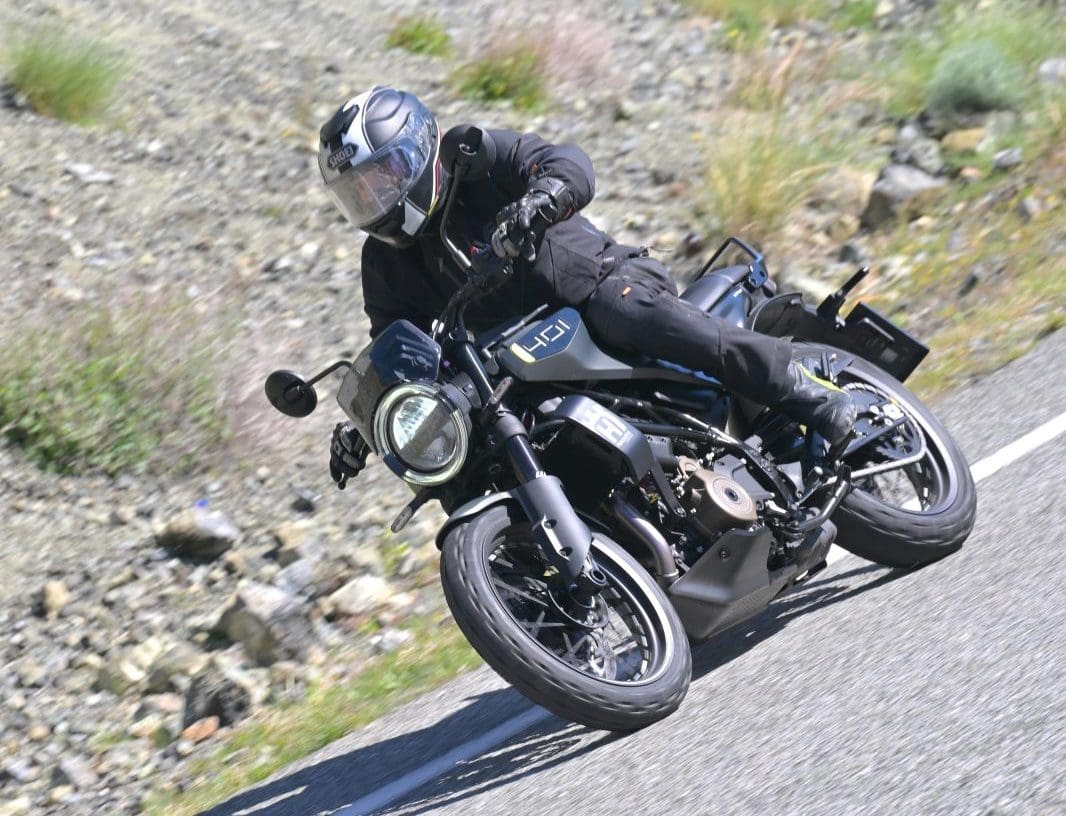
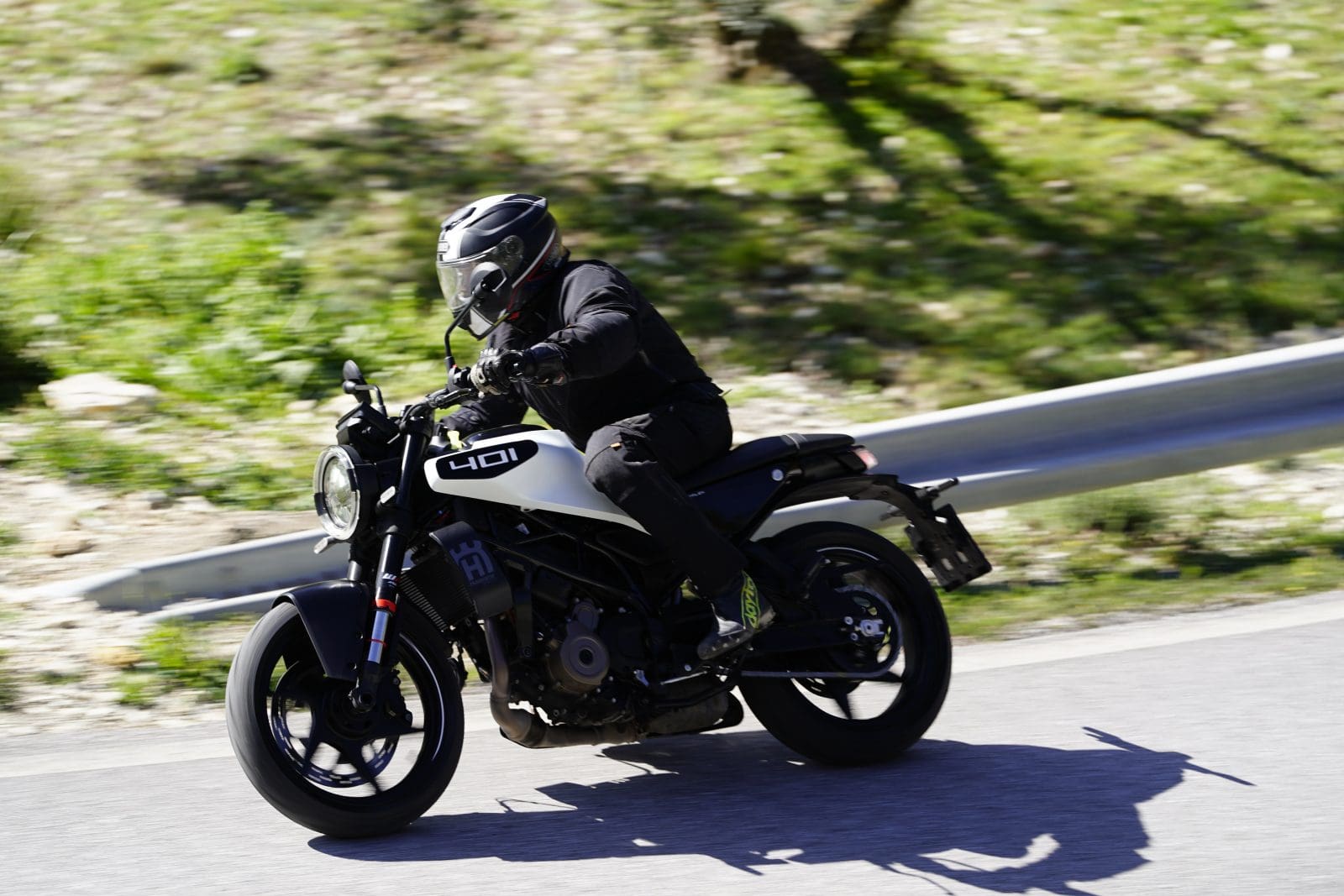
New riders and seasoned campaigners alike can be guilty of turning a blind or bemused eye to their bike’s adjustability. On the new Apex fork and shock, WP has reduced the available damping settings without changing the actual damping range. One step in the new system is worth five clicks in the old system. Simplified? Yes. Empowering? Unsure. But with such a small range of damping force available, simplification makes perfect sense. Preload adjustment is also more accessible thanks to the offset shock position. So no excuses, get twiddling.
Ample stopping power is delivered by the 320mm single front disc gripped by a four-piston radially-mounted caliper, with controllability reinforced by a dual-piston caliper and 240mm disc at the rear, all by Bybre. Rear feel and sensitivity is much improved over the single-piston rear caliper and 230mm disc of the old bike. Bosch provides cornering ABS via its 9.3MP system. Unlike the 2023 Husky 401, this ABS modulator utilises an integrated pressure sensor. Less digital guesswork relying on algorithms, more modulation based on real-time pressure data. No quirks. It just works.
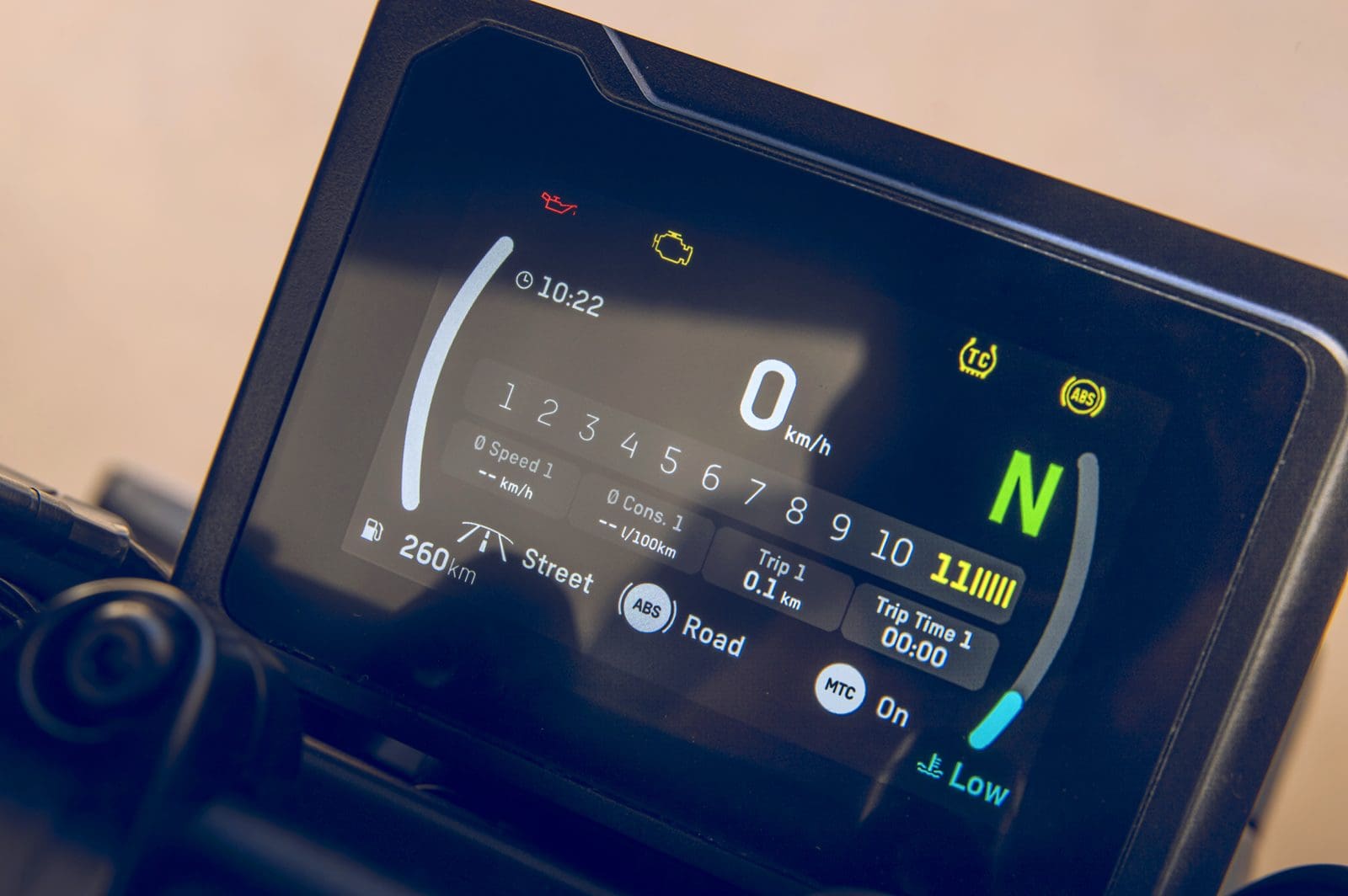
Loose kids can be, because Husky gives you Supermoto Mode. Cornering ABS out front, rude skids out back. I live and work in the same Spanish neighbourhood where KTM/Husky/GasGas conduct their dynamic development. The mountain roads around here are like a Supermoto Mode graffiti scribble board. It’s hilarious.
Occupying a fair chunk of that 20 percent proportional growth is a 3.5L-larger fuel tank, up to a generous 13 litres. With the new-found comfort of the 401, emptying that volume in one sitting shouldn’t be a problem. That’s a decent distance north of 300 kays depending on how hamfisted you ride, so touring isn’t out of the question, or out of the 401’s comfort zone, particularly the Svartpilen.
Underbelly clearance was a pinch point of the previous LC4 engine, particularly on the KTM 390 Adventure, where adequate undercarriage protection and an accessible seat height fought a bitter battle of off-road relevance. The new LC4c engine, being more compact, sits 35mm higher in the chassis. So using all of the new 401s 150mm of wheel-travel, up 8mm on the old bike, shouldn’t result in a beaching. I suspect that the real reason for the engine redesign will emerge with the KTM, and possibly Norden 401, adventure offerings using the new powerplant. Low weight, high clearance, low seat height. It’s an entry-level adventure bike’s charm charter.
As with the 2024 KTM 390 Duke, finding Euro5+ compliance has come with a capacity hike from 373 to 398.6cc for the Husky 401. But bigger means smaller, because changing to a SOHC cylinder-head design has resulted in a weight and size reduction compared the previous DOHC LC4 engine, hence the new LC4c, or ‘compact’ moniker.
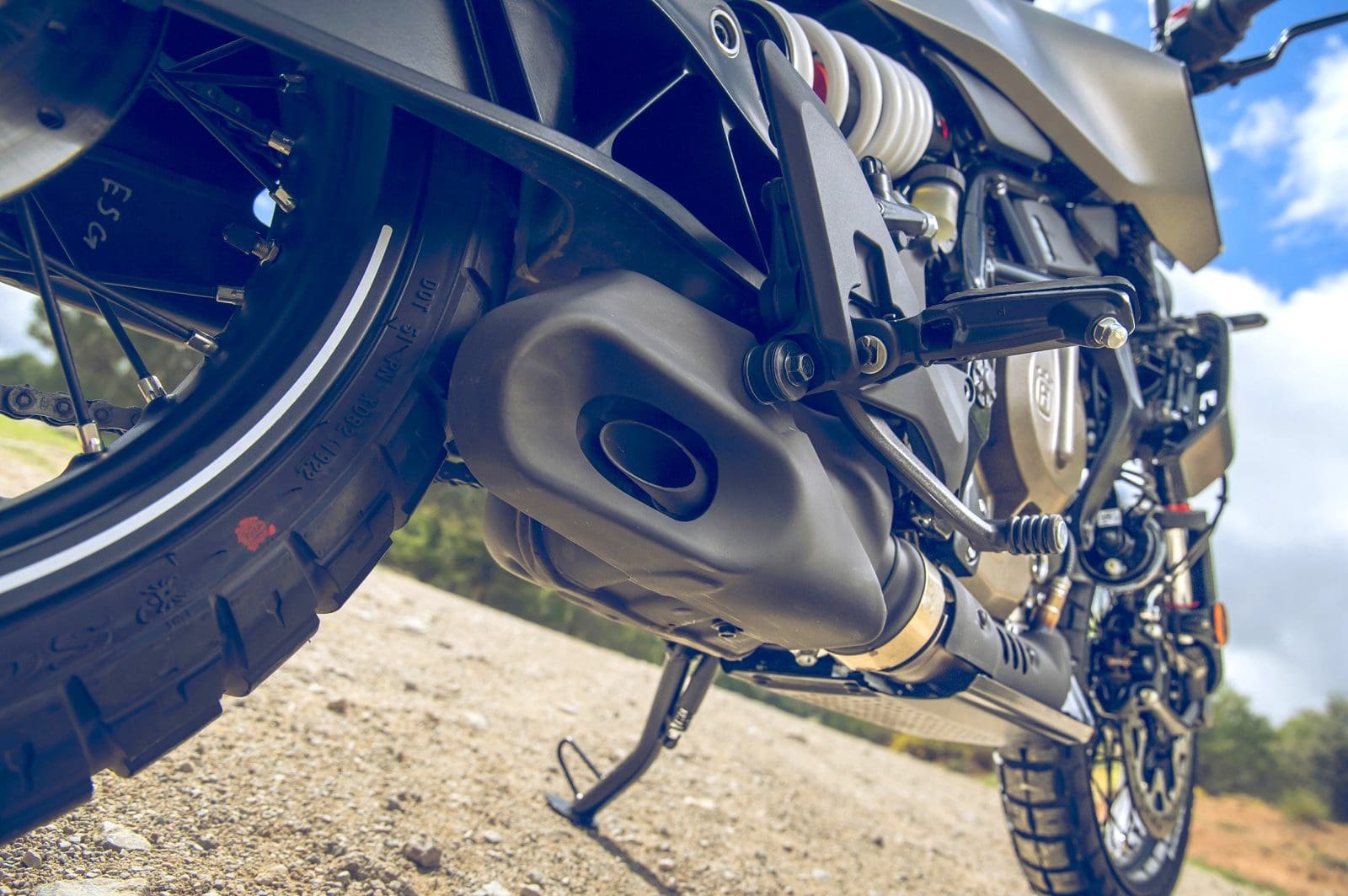
The accompanying 2Nm boost in grunt and 1kW of added kapow may not sound much, because it’s not. But there is a subtle, definable improvement in refinement and tractability worth acknowledgement. It’s better. Roll-ons in any gear were smooth as long as the engine was already spinning above 3000rpm. Below those revs calibration isn’t always 100 percent clean, but there weren’t any deal-breaking glitches either. Mid- to top-end rpm is where it’s happiest and does its best work. This means it’s zappy enough to make you giggle in the hills while around-town drivability is good too. It’s just not going to pull away from low rpm as cleanly as some less powerful single-cylinder bikes of similar capacity.
Although the 401s have ride-by-wire throttle and therefore no cables to adjust, it seems that there has been an amount of ‘freeplay’ tuned into the system that, for me at least, feels a little excessive. When there’s no danger of having an over-tight cable hold the throttle open, there seems no point in having such a throttle delay designed in. But hey, I’m infamously finicky when it comes to cable adjustment.
Ride-by-wire gives the means to add modes. Rain and Street modes are what you get, and they’re all you need. Throttle progression is soft in the wet and direct in the dry, with lean-angle sensitive traction control that’s tuned for slippery or grippery going. Keeping it simple. Great.
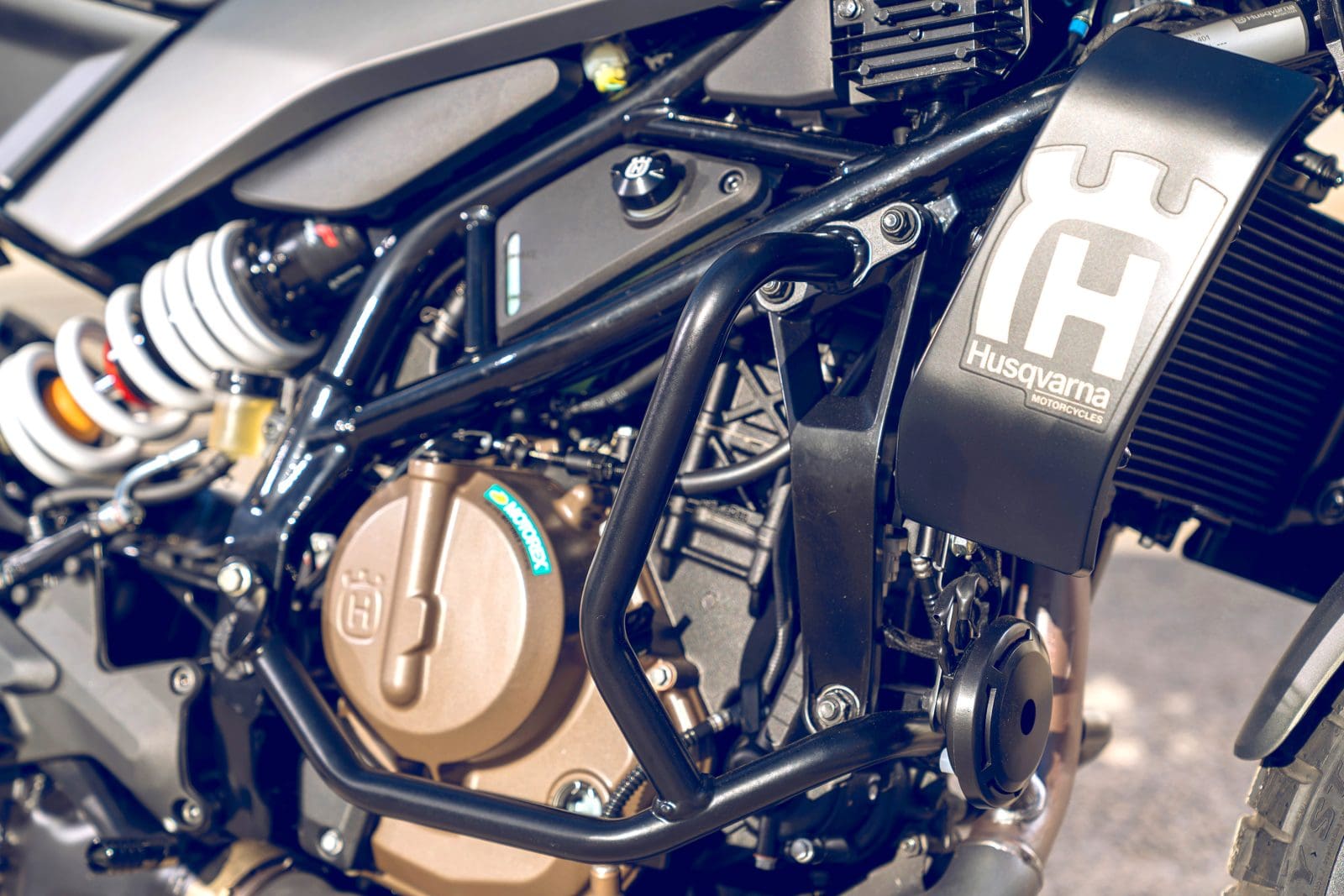
Despite ostensibly off-road looks thanks to its blocky Pirelli Rally STR tyres, the Svartpilen has the better on-road manners of the two 401 models. Implausibly, this is partly down to the tyres themselves. Despite being the same sizes as the Michelin Power 6 road rubber fitted to the Vitpilen, the Pirelli’s more rounded profile gives a more progressive roll rate when tipping into corners. It’s just enough to give the rider extra confidence and suits the chassis’ characteristics better than the sharper-steering street Michelins.
The other factor which gives the Svartpilen more rider-friendly manners is the higher handlebar. Although the Vitpilen’s handlebar is a huge improvement over the previous model in terms of comfort, it’s still on the sporty side. Its forward-prone stance added to the over-sensitivity of the Vit’s front tyre when flicking between tight switchback corners. For my height at least, the Svartpilen’s more relaxed handlebar made it easier and more natural to move my weight back where it needed to be. Even with the fork’s damping dialled up to the maximum, there is still substantial pitch when braking aggressively. The higher handlebar helped here too.
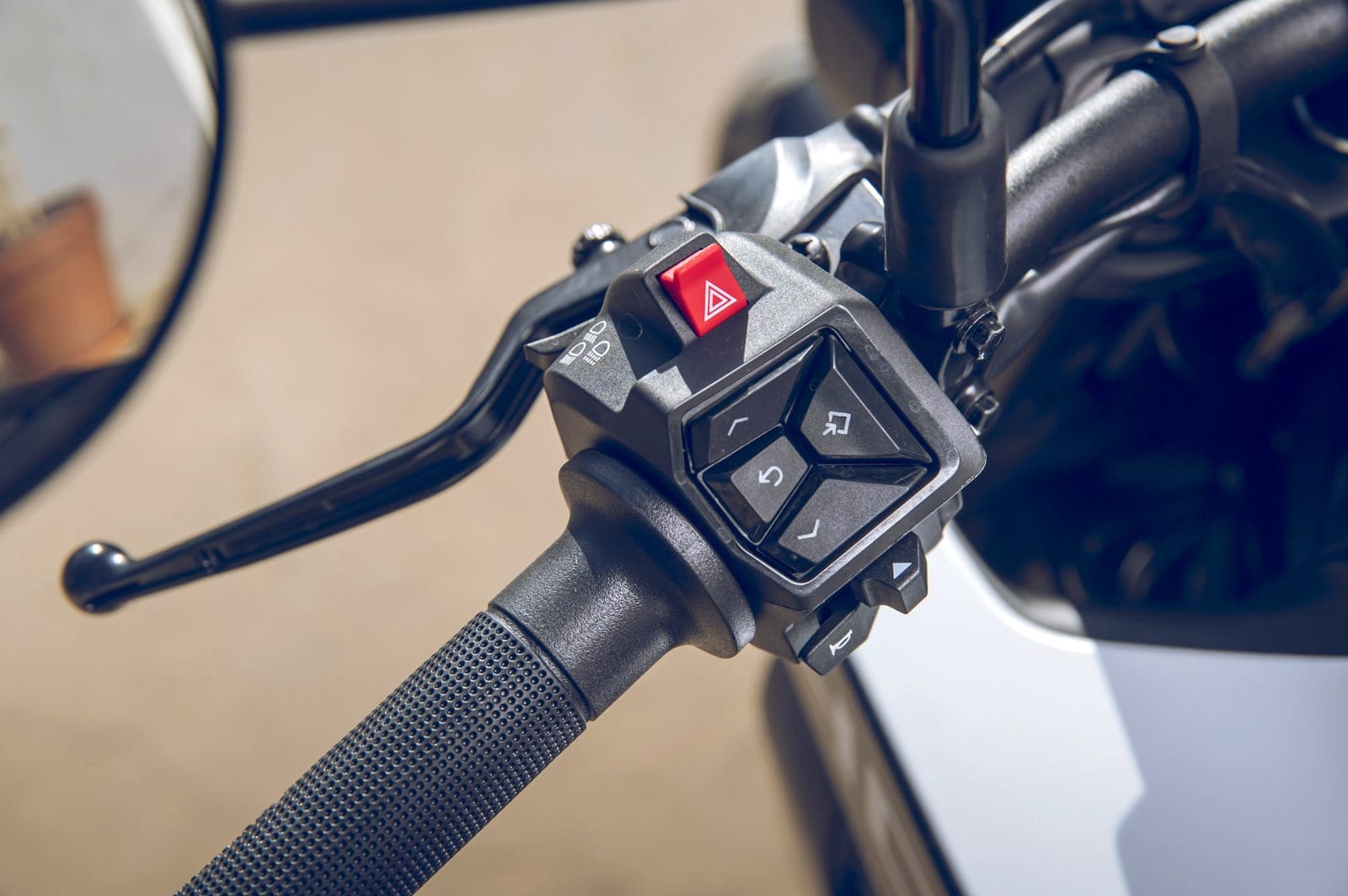
However, for the majority of riders and riding situations that these bike’s are likely to see, the suspension settings and handling are absolutely spot on. Husqvarna hasn’t made these bikes to be raced up Spain’s Rhonda road, they’re made for Commuterville comfort, and this is the most impressive aspect of Husky’s 401 model update.
The two models share the same footrest position and design, so no off-road ’pegs for the Svartpilen.
All controls are also shared, with span-adjustable levers a welcome luxury on an entry-level platform. Where the Huskys do seriously trump their KTM cousin, besides the $170 saving, is the inclusion of the two-way quickshifter as standard. Something the Duke only gains with a factory software upgrade.
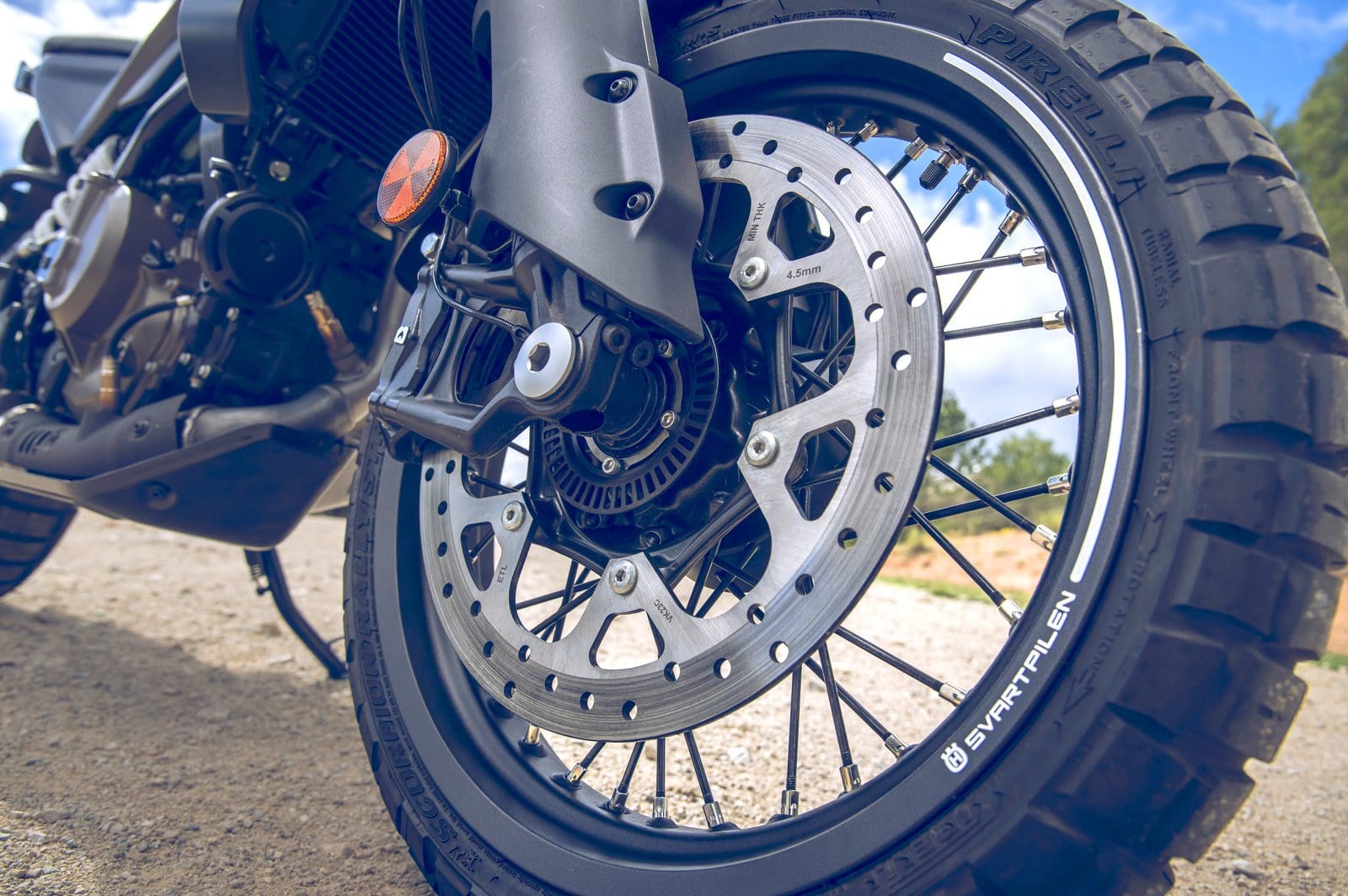
The shifts were sweet in both directions, with a feather of the clutch only required for last-minute full-lean downshifts.
Non-tubeless spoked wheels on the new Svartpilen are surprising, but probably a cost-cutting concession.
These new models should be a turning point for Husqvarna’s 401 range in Australia, which it’s fair to say hasn’t been a runaway best-seller in its previous form. The model caters primarily for new licence holders, and I suspect the previous 401s introductory price, its slightly prickly styling points and perhaps the brand’s gritty heritage were all lost on the youth of its target market.
I hope this time around the little Huskies pick up some support. Not because I’m just old enough to remember Heikki Mikkola, Hans Appelgren and have a soft spot for the gunsight logo of the former Swedish musket maker, but because these attractive and much-improved, learner-friendly motorcycles warrant a retrial.
PROS : All-day comfortable seat and plush suspension, feels like a full-sized bike, supremely accessible and user-friendly.
CONS: Only the Vitpilen gets a tubeless wheel upgrade and not quite 100% marks for fueling at very low rpm.
BLACK OR WHITE?
Choosing between these two pint-sized city slickers should be easy. Are you an urban explorer, or urban roadster. Do you dig scramblers or crave cafe racers? They both come with the same electronics, engine performance, brakes and suspension. Both are nimble and peppy, so ideal for metrocentric transport. But for my garage, the answer is clear.
The Svartpilen offers slightly better confidence on all surfaces, is more relaxed and comfortable, its grab rail gives improved pillion security, it comes standard with a small but useful screen and even a tank rack. Around town or out on the open road, I’d choose the darkside any day. The fact that both 401s have identical pricing just seals the deal.
If I were to be very picky, the only downsides would be the Svartpilen’s non-tubeless wheel set, and the fact that chunky adventure tyres can wear unevenly and tend to feed more road vibration back to the rider and pillion. But you could always opt for Pirelli’s Scorpion Trail 3 when the STRs wear out. You’d get the same progressive profile, with none of the road rumble.
Of course the Vitpilen will appeal more to some, and they’ll also be stuffing a great bike into their garage sooner, with bikes on sale this month. Svartpilen lovers will have to wait until July.
RETAIL THERAPY
Accessorising your pride and joy is the best form of retail therapy and an essential part of the motorcycling journey. Let’s face it, you’ll only spend the money on coffee and donuts anyway, so why not give your bike a boost of self-esteem and yourself a boost in life expectancy. My picks are the Remus high-line silencer in silver, because I’m old school, a brushed aluminium radiator spoiler set to match and off-road ’pegs to validate the scrambler cred of my Svartpilen. The Svart’s tank rack has a dedicated five-litre weatherproof tank bag, that’ll have to go on. Smartphone bracket and wireless charger module are virtually essential. And there’s plenty of anodised swag like reservoir caps, oil plugs and chain adjuster blocks.
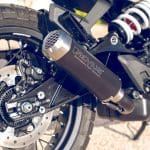
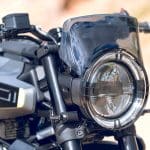
Don’t crash, but if you do, make sure you’ve already bunged on some of the genuine accessory crash bars, headlight protector and (probably) indestructible flippy-floppy clutch and brake levers.
Vitpilen owners can get in on the action with an accessory tank rack, which is larger than the Svart’s standard one. There’s an accessory fly screen too. So if you can’t wait until July for your Arrow, you can still add the bits that the Vitpilen doesn’t offer as standard. Prices and availability TBC.
WORDS: PAUL YOUNG PHOTOGRAPHY: SUPPLIED
SPECS
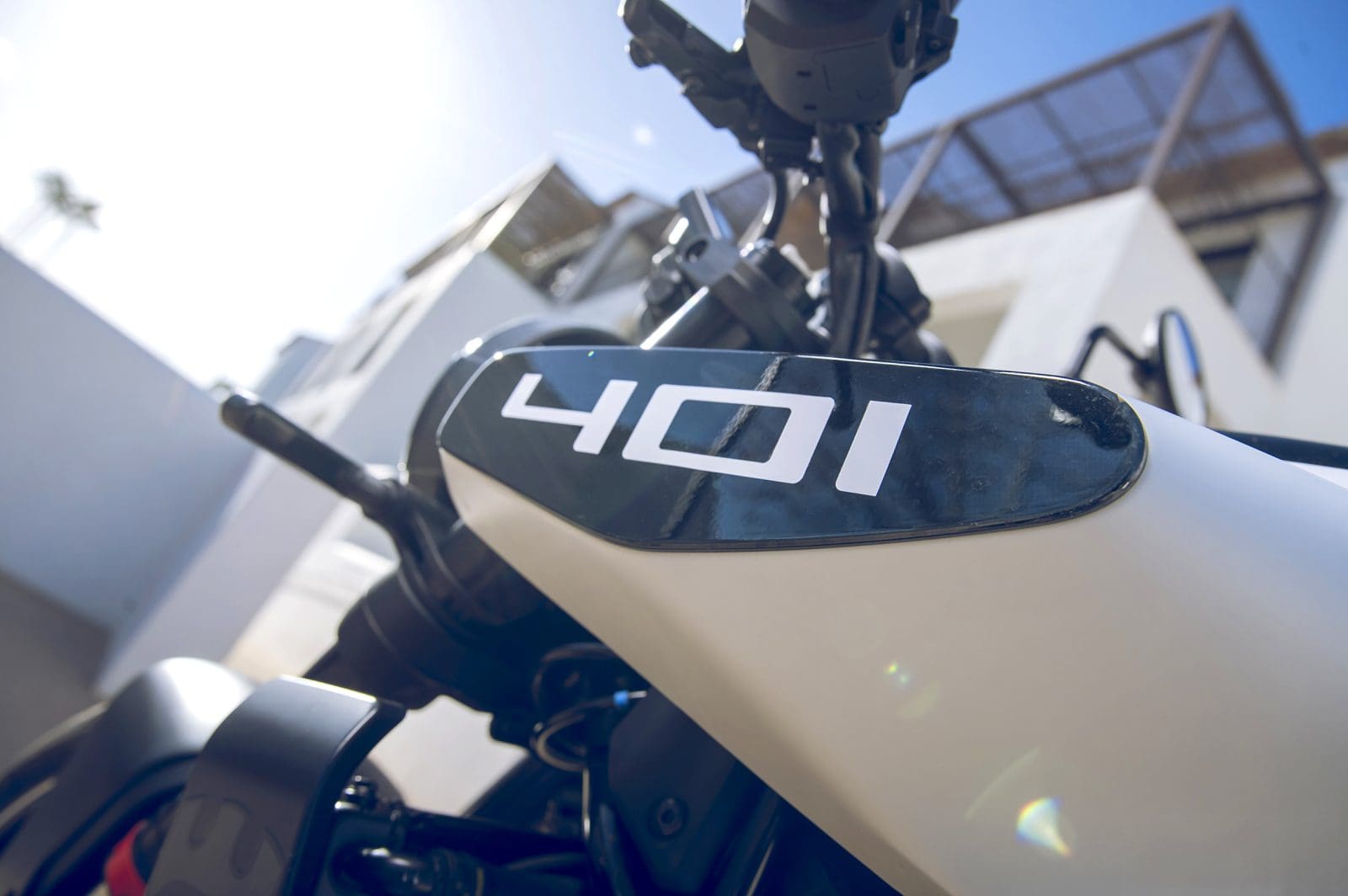
ENGINE
Capacity 398.6cc
Type Single cylinder, SOHC, four valves per cylinder
Bore & stroke 89mm x 64mm
Compression ratio Not given
Cooling Liquid
Fueling EFI, RBW
Transmission Six-speed
Clutch Wet, multi-plate, slipper type
Final drive Chain
Performance
Power 33.5kW (45hp) @ 8500rpm (claimed)
Torque 39Nm @ 7000rpm (claimed)
Top speed 175km/h (estimated)
Fuel consumption 3.4L/100km (claimed)
ELECTRONICS
Type Bosch EMS
Rider aids ABS, cornering traction control, quickshifter, speed limiter
Rider modes Rain and Street
CHASSIS
Frame material Tubular steel
Frame type Trellis
Rake 24˚
Trail Not given
Wheelbase 1375mm
SUSPENSION
Type WP Apex
Front: 43mm, open cartridge, USD fork, compression and rebound adjustable, 150mm travel
Rear: Monoshock, rebound and preload adjustable, 150mm travel
WHEELS & BRAKES
Wheels Cast aluminium (Svart: spoked)
Front: 17 x 3.0 Rear: 17 x 4.0
Tyres Michelin Power 6 (Svart – Pirelli Rally STR)
Front: 110/70R17 (54W)
Rear: 150/60R17 (66W)
Brakes ByBre, Bosch cornering ABS with Supermoto Mode
Front: Single 320mm disc, four-piston radial caliper
Rear: Single 240mm disc, twin-piston floating caliper
DIMENSIONS
Weight 154.5kg (Svart: 159kg) (wet/no fuel, claimed)
Seat height 820mm
Width Not given
Height Not given
Length Not given
Ground clearance 180mm
Fuel capacity 13L
SERVICING & WARRANTY
Servicing First: 1000km
Minor: 10,000km
Major: 20,000km
Warranty Two years, unlimited kilometres
BUSINESS END
Price $8795 (ride away)
Colour options Vitpilen: White, Svartpilen: Black
Contact www.husqvarna-motorcycles.com/en-au
